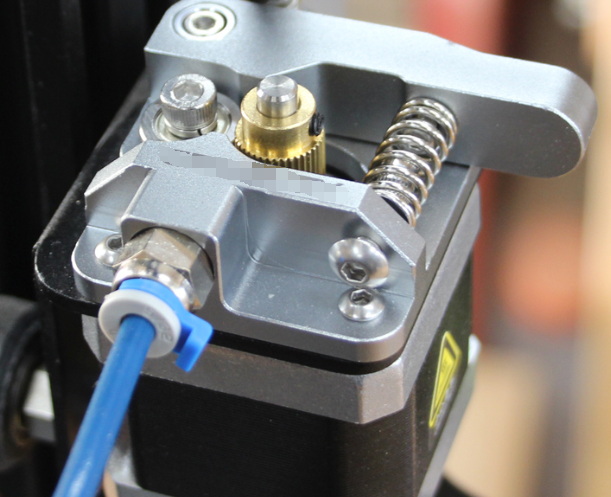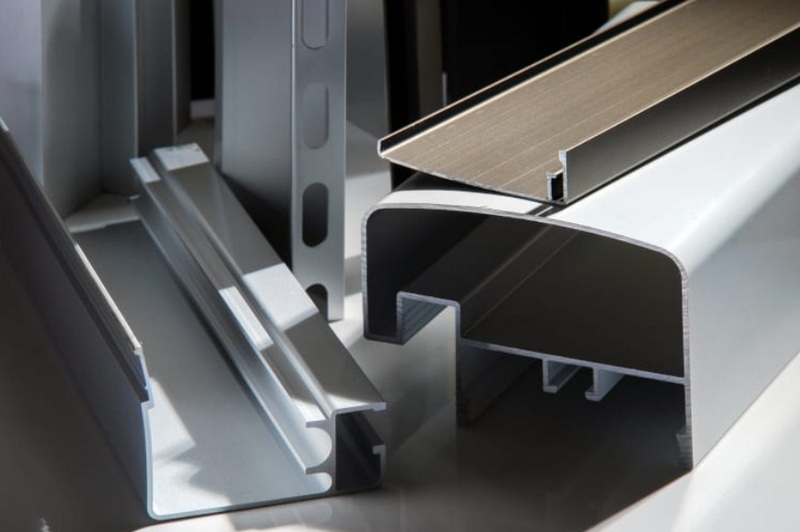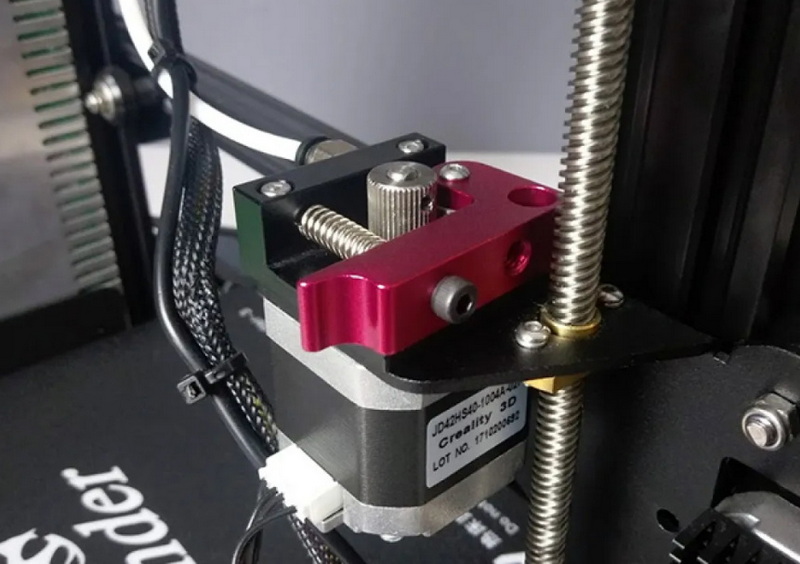Content Menu
● Introduction to the Ender 3 Pro Extruder System
● Limitations of the Stock Plastic Extruder
● Benefits of Upgrading to an Aluminum Extruder
● Factors to Consider When Upgrading to an Ender 3 Pro Aluminum Extruder
● Step-by-Step Installation Guide
● Alternative Extruder Options
● Maintaining Your Ender 3 Pro Aluminum Extruder
● Community Insights and Reviews
● Conclusion
● FAQ
>> 1. Will upgrading to an aluminum extruder void my Ender 3 Pro warranty?
>> 2. How often should I maintain my Ender 3 Pro aluminum extruder?
>> 3. Can an aluminum extruder improve printing with flexible filaments?
>> 4. Is the aluminum extruder upgrade compatible with all Ender 3 Pro models?
>> 5. What are the signs that my extruder needs to be replaced?
● Citations:
The Creality Ender 3 Pro is a popular and affordable 3D printer, known for its versatility and ease of modification, well-regarded by hobbyists and professionals alike[1]. One of the most common and impactful upgrades is replacing the stock plastic extruder with an aluminum extruder[1]. This article delves into the benefits of using an aluminum extruder on the Ender 3 Pro, installation, alternative options, and maintenance to provide a comprehensive understanding of this upgrade[1].

Introduction to the Ender 3 Pro Extruder System
The extruder is a critical component of any 3D printer, responsible for feeding filament precisely and consistently to the hot end, where it is melted and deposited onto the print bed to form the object[1]. The Ender 3 Pro comes standard with a plastic extruder, which, while functional, has inherent limitations that can affect print quality and overall reliability[1].
Limitations of the Stock Plastic Extruder
- Durability Issues: Plastic extruders are prone to wear and tear. The constant stress of filament feeding can cause the plastic to degrade over time, leading to cracks, deformation, and eventual failure[1][7].
- Inconsistent Filament Feeding: The flexibility of plastic can result in inconsistent filament feeding, leading to under-extrusion, especially with flexible filaments[1].
- Heat Sensitivity: Plastic is not an ideal material for dissipating heat. This can cause the filament to soften or melt prematurely, leading to clogs and print imperfections[1].
Benefits of Upgrading to an Aluminum Extruder
Upgrading to an aluminum extruder offers several advantages that address the limitations of the stock plastic extruder[7]:
- Increased Durability: Aluminum is much more resistant to wear and tear than plastic[1][7]. An aluminum extruder can withstand the constant stress of filament feeding without degrading, ensuring long-term reliability.
- Improved Consistency: The rigid metal construction of an aluminum extruder ensures more consistent filament feeding[1][7]. This results in more accurate and uniform extrusion, leading to better print quality with fewer imperfections.
- Better Heat Dissipation: Aluminum conducts heat more efficiently than plastic[1]. This helps dissipate heat away from the motor and filament, reducing the risk of heat-related issues such as softening or clogging.
- Longer Lifespan: An aluminum extruder is likely to last much longer than its plastic counterpart[1]. Its robust construction and resistance to wear make it a worthwhile investment for users who print frequently or require high levels of reliability.
Factors to Consider When Upgrading to an Ender 3 Pro Aluminum Extruder
While upgrading to an aluminum extruder is generally beneficial, there are several factors to consider to ensure a successful upgrade[1]:
- Compatibility: Ensure the aluminum extruder you choose is specifically compatible with the Ender 3 Pro model. Some extruders are designed for specific versions or have slight variations that may affect compatibility[1].
- Installation Complexity: While the installation process is relatively simple, it requires some basic technical skills[1]. If you're not comfortable with disassembling and reassembling printer components, consider seeking assistance from someone with experience.
- Cost: Aluminum extruders are more expensive than plastic ones[1]. However, the investment is often worthwhile due to the improved performance and longevity.
- Maintenance: While more durable, aluminum extruders still require regular maintenance for optimal performance[1]. This includes cleaning the extruder gear and ensuring proper tension on the lever arm.
- Warranty: Modifying your printer may affect its warranty[1]. Check with the seller or manufacturer about their specific warranty policies regarding upgrades.

Step-by-Step Installation Guide
Here's a general step-by-step guide to installing an aluminum extruder on your Ender 3 Pro. Note that specific steps may vary slightly depending on the exact model of extruder you purchase.
1. Prepare Your Printer:
- Turn off and unplug your Ender 3 Pro.
- Allow the hot end to cool completely.
- Gather necessary tools: Allen wrenches, screwdrivers, and pliers.
2. Remove the Old Extruder:
- Disconnect the Bowden tube from the extruder.
- Remove the filament from the extruder.
- Unscrew and detach the stepper motor from the plastic extruder.
- Remove the plastic extruder from the printer.
3. Install the Aluminum Extruder:
- Attach the stepper motor to the new aluminum extruder[11].
- Ensure the gears are properly aligned.
- Mount the aluminum extruder onto the printer frame.
4. Reconnect Components:
- Reconnect the Bowden tube to the new extruder.
- Adjust the tension on the extruder arm[1].
5. Test and Calibrate:
- Load filament into the extruder.
- Heat up the hot end and extrude some filament to ensure smooth feeding.
- Adjust your slicer settings as needed to optimize print quality[1].
Alternative Extruder Options
While aluminum extruders are a popular upgrade, other options are available, each with its own set of advantages and disadvantages[1]:
- Dual-Gear Extruders: These extruders use two gears to grip the filament, providing more reliable feeding and reducing the risk of slipping[1]. Dual-gear extruders are particularly useful for flexible filaments like TPU.
- Direct Drive Extruders: In a direct drive system, the extruder is mounted directly above the hot end, reducing the distance the filament needs to travel[1]. This setup improves responsiveness and is better suited for flexible filaments.
- Titan Extruders: Known for their compact design and high torque, Titan extruders offer excellent performance in a small package[1]. They are compatible with a wide range of filaments and are relatively easy to install.
- Creality Sprite Pro Extruder: The Sprite Pro Extruder body is cast from aluminum for heat resistance[2]. It is a complete direct drive print head with good printing performance and is capable of reaching up to 300C[2].
Maintaining Your Ender 3 Pro Aluminum Extruder
Proper maintenance is essential to ensure the longevity and performance of your aluminum extruder[1]:
- Regular Cleaning: Clean the extruder gear regularly to remove any accumulated debris or filament residue[1].
- Check Tension: Ensure the tension on the extruder arm is properly adjusted[1]. Too little tension can cause slipping, while too much tension can damage the filament.
- Inspect for Wear: Periodically inspect the extruder for any signs of wear or damage[1]. Replace any worn parts promptly to maintain optimal performance.
- Lubricate Moving Parts: Apply a small amount of lubricant to the moving parts of the extruder to keep them running smoothly.
Community Insights and Reviews
Many users in the 3D printing community have shared their experiences with upgrading to an aluminum extruder on the Ender 3 Pro. Most reviews highlight improvements in print quality, reliability, and durability[1][7]. Users often report more consistent extrusion, reduced stringing and oozing, and better overall print finish[1].
Conclusion
Upgrading to an aluminum extruder on your Ender 3 Pro is a worthwhile investment for improving print quality, consistency, and the overall lifespan of your 3D printer[1]. While the stock plastic extruder is functional, it has limitations that can affect performance over time. An aluminum extruder offers increased durability, better filament feeding, and improved heat dissipation, making it a popular and effective upgrade[1]. By following the step-by-step installation guide and considering the factors discussed in this article, you can successfully upgrade your Ender 3 Pro and enjoy enhanced 3D printing capabilities.

FAQ
1. Will upgrading to an aluminum extruder void my Ender 3 Pro warranty?
Modifying your printer may affect its warranty[1]. It's best to check with the seller or manufacturer about their specific warranty policies regarding upgrades.
2. How often should I maintain my Ender 3 Pro aluminum extruder?
Regular maintenance, including cleaning and inspection, should be performed every 1-3 months, depending on usage[1]. More frequent maintenance may be required if you print frequently or use abrasive filaments.
3. Can an aluminum extruder improve printing with flexible filaments?
Yes, an aluminum extruder can improve printing with flexible filaments by providing more consistent and reliable filament feeding[1]. However, for optimal results, consider using a dual-gear or direct drive extruder specifically designed for flexible filaments.
4. Is the aluminum extruder upgrade compatible with all Ender 3 Pro models?
Most aluminum extruder upgrades are compatible with various Creality models, including the Ender 3, Ender 3 Pro, and Ender 3 V2[1]. However, always check the compatibility before purchasing.
5. What are the signs that my extruder needs to be replaced?
Signs that your extruder needs to be replaced include:
- Cracks or visible damage to the extruder body[11]
- Inconsistent filament feeding[1]
- Filament slipping or grinding[1]
- Reduced print quality[1]
Citations:
[1] https://www.yjing-extrusion.com/can-you-use-an-aluminum-extruder-on-ender-3.html
[2] https://3dprintbeginner.com/creality-sprite-pro-extruder-review/
[3] https://www.3dea.co.nz/shop/product/creality-red-metal-extruder-upgrade-kit/
[4] https://www.reprapwarehouse.com/products/official-creality-all-metal-aluminum-extruder-ender-3-pro-ender-5-cr-10-series
[5] https://www.youtube.com/watch?v=UtemZqFJ5rY
[6] https://www.bastelgarage.ch/creality-aluminum-extruder-upgrade-kit-gray
[7] https://blog.goldsupplier.com/metal-extruder/
[8] https://www.youtube.com/watch?v=m6dRh0oVzhc
[9] https://www.youtube.com/watch?v=zJRxRVN3p3Y
[10] https://www.aliexpress.com/item/1005006523519131.html
[11] https://www.youtube.com/watch?v=ikVFselJO4Y
[12] https://www.reddit.com/r/ender3v2/comments/149wfud/metal_extruder_upgrade/
[13] https://letsprint3d.net/best-extruder-upgrades-creality-ender-3/
[14] https://www.creality.com/br/blog/simple-creality-ender-3-s1-review-worth-buying-or-not
[15] https://www.reddit.com/r/ender3/comments/eqeddp/the_all_aluminum_extruder_upgrade_is_only_ten/
[16] https://www.youtube.com/watch?v=Ns7lH_FjX6M
[17] https://www.reddit.com/r/3Dprinting/comments/lbtobl/what_is_the_benefit_of_a_metal_extruder_for_an/
[18] https://www.reddit.com/r/3Dprinting/comments/q0xjka/is_it_worth_upgrading_to_an_all_metal_extruder/
[19] https://www.3djake.com/reviews/creality-3d-printers-spare-parts/metal-extruder-upgrade-kit
[20] https://www.yjing-extrusion.com/what-is-a-creality-aluminum-extruder-and-why-should-you-use-it.html
[21] https://www.youtube.com/watch?v=UtemZqFJ5rY
[22] https://www.aliexpress.com/item/1005006849813208.html
[23] https://www.crealityexperts.com/creality-extruder-guide
[24] https://all3dp.com/1/creality-ender-3-pro-3d-printer-review/
[25] https://www.youtube.com/watch?v=uyFGLYJZfrM
[26] https://3dprintbeginner.com/creality-ender-3-max-review-bigger-equals-better/
[27] https://www.youtube.com/watch?v=KRxMu7xp2tI
[28] https://www.crealityexperts.com/creality-extruder-upgrade-instructions
[29] https://www.thingiverse.com/thing:4657483
[30] https://www.youtube.com/watch?v=pVFlGRmqNxI
[31] https://www.youtube.com/watch?v=nCb_94RTXCU
[32] https://www.aliexpress.com/item/1005004923874649.html
[33] https://www.youtube.com/watch?v=uMHtzwEHfUc
[34] https://www.youtube.com/watch?v=BUFC9YDIiLg
[35] https://www.youtube.com/watch?v=qoj6PE7bkfc
[36] https://www.youtube.com/watch?v=rzNmFK2zIWo
[37] https://support.th3dstudio.com/helpcenter/upgraded-aluminum-extruder-installation-video-v2/
[38] https://www.youtube.com/watch?v=m6dRh0oVzhc
[39] https://www.crealitycloud.com/blog/3d-printing-troubleshooting/ender-3-extruder-skipping
[40] https://3dprintingspace.com/t/extruder-and-hot-end-issues/2416
[41] https://www.wevolver.com/article/ender-3-extruder-skipping
[42] https://www.creality.com/pages/faq
[43] https://community.element14.com/members-area/personalblogs/b/nico-tewinkel-s-blog/posts/ender-3-pro-broken-extruder-arm
[44] https://makersteve.com/2018/08/25/ultimate-build-guide-for-creality-ender-3-step-by-step-a-makersteve-special-report/
[45] https://www.thingiverse.com/groups/ender3/forums/general/topic:41359
[46] https://www.reddit.com/r/ender3/comments/eqeddp/the_all_aluminum_extruder_upgrade_is_only_ten/
[47] https://all3dp.com/2/ender-3-under-extrusion-solutions-tips-tricks/
[48] https://shinyupgrades.com/pages/ender-3-pro-starter-guide
[49] https://letsprint3d.net/how-to-upgrade-the-extruder-ender-3/
[50] https://www.youtube.com/watch?v=zJRxRVN3p3Y
[51] https://forum.creality.com/t/extruder-gear-slipping-sometimes/13948
[52] https://www.reddit.com/r/ender3v2/comments/wjxsaj/problems_after_installing_metal_extruder/
[53] https://www.yjing-extrusion.com/can-you-use-an-aluminum-extruder-on-ender-3.html
[54] https://3dprinting.stackexchange.com/questions/18687/ender-3-pro-extruder-motor-failing-constantly
[55] https://www.youtube.com/watch?v=RLsALMPDb84
[56] https://www.creality.com/fr/pages/faq






















